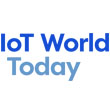Technologies such as AI, 5G and IoT promise organizations enhanced resilience, but digital literacy training is a prerequisite to align them.
Key takeaways:
Organizations should accelerate digital literacy training to unlock the potential of emerging technologies such as 5G, IoT and artificial intelligence.
- Technology continues to move faster than business models, driving a lag in deployment.
- Achieving digital maturity isn’t a single moment, but rather an incremental process.
As the recession casualties mount, a growing chorus of organizations is taking a fresh look at how digital tools such as artificial intelligence, 5G and the Internet of Things (IoT) can improve agility and resilience. But while data and analytics feature prominently behind the gilded exterior of emerging technologies, many organizations lack the data savviness and digital literacy to deploy them effectively.
Take the fifth generation of wireless communications technologies, for example. “From a workforce standpoint, you need a certain level of digital literacy to really take full advantage of … 5G,” said Dan Hays, a principal at PwC. “In some cases, the connectivity technology has outpaced the digital literacy of a lot of human beings,” he added. Relevant expertise could include everything from analytics to data visualization and workflow automation.
[IoT World is North America’s largest IoT event where strategists, technologists and implementers connect, putting IoT, AI, 5G and edge into action across industry verticals. Book your ticket now.]
Business Models Struggle to Keep up with Technology
In an ideal market, new business models should be developed in tandem with emerging technologies. But during the past decade, the rate of technological change has eclipsed revenue generation. One of the most apparent symptoms of this predicament is the proliferation of “unicorns” — startups with a valuation of at least a billion dollars, many of which have failed to reach profitability.
Another sign of lagging business models can be seen in the early days of the Internet of Things when vendors lacked the maturity to craft products that solved tangible problems. Several years ago, many IoT vendors catering to the enterprise and industrial markets relinquished responsibility for creating a workable solution for their customers, and marketed collections of customizable components and software.
In the business-to-consumer market, the popularity of IoT led to an explosion of whimsical devices such as connected toasters, pet feeders and toothbrushes. “The stampede to connect anything and everything [was] driven by grossly inflated numbers and speculation,” concluded Carey Smith in Harvard Business Review in 2017.
Similarly, many potential applications of 5G are solutions in search of problems, or, as Hays put it: “nonsense.” Several industry observers have, for instance, described 5G as a foundational technology for autonomous vehicles. While 5G technology could enable a range of applications for autonomous vehicles as networks mature along roadways, “I don’t think we are anywhere near seeing 5G as a requirement for autonomous vehicles,” Hays concluded.
The situation is similar when it comes to artificial intelligence and edge computing. The latest AI-enabled chips offer far greater processing power than their predecessors. As a result, AI workloads can be pushed outside traditional data center and cloud environments. Thanks to a wave of edge computing silicon advances, “You can now do localized object and sound recognition, and video analysis,” said Steve Roddy, vice president of products in Arm’s machine learning group. “But you still need to have the infrastructure and the decision-making software for the application in question.”
The rapid pace of technological progress in recent years has also given rise to confusing messaging from technology vendors, which leaves many enterprise companies in a state of paralysis, according to Nitin Kumar, chief executive officer of Appnomic. “Should I monetize IoT in the cloud or at the edge? Should I centralize with software-defined networking, or should I decentralize with blockchain?” Kumar asked. “The answer is, ‘How the hell should I know?’”
Digital Savviness Demands Data Expertise
One of the strongest predictors for an organization’s digital success is how data-driven their culture is. Enterprise Strategy Group’s research indicates that organizations with such a group in place are generally more successful in terms of technology deployment and business results. Further, organizations with a data science team are more than four times more likely to use at least 40% of the data they collect.
While most organizations have a fundamental grasp of the power of data, few have reached data maturity: an ability to collect and convert raw data into insights or revenue. “Today, we are spitting out gargantuan amounts of data, but having said that, you don’t monetize data — you monetize attributes of data,” Kumar said. “You might have machine data, but lack maintenance data. There’s often a very fractured view of the attributes of data you need.”
One reason for these attribute silos is the gulf view between operational technology (OT) and information technology (IT) staff. “For 100 years, OT has operated autonomously without depending on IT. Now suddenly with IoT, their budgets are aligning with the IT guys,” Kumar said.
While OT staff focuses on monitoring sensors and software to monitor and control their equipment, the IT team traditionally focuses on data processing and analytics. “The next stage of manufacturing is defined by the convergence of OT and IT and the real-time interdependence between the process and analytics to deliver greater data maturity,” said Tim Hall, InfluxData’s vice president of products. Such a convergence is not easy to achieve as it requires alignment between industrial processes and data architecture.
While the industrial sector’s cultural challenges are pronounced, other organizations face similar hurdles. The pace of technological advances is so brisk and the learning curve so steep that the risk of making basic strategic blunders is significant.
While some organizations aim to move quickly at self-reinvention to minimize their risk exposure in a rapidly changing marketplace, an all-or-nothing approach may be more hazardous, as a Harvard Business Review piece concluded.
Digital maturity is an incremental journey. “Some people want to immediately digitize a business model and jump straight to the digital value proposition and then realize that 20% of their assets or processes cannot be digitized,” Kumar added. “Such people are stuck in a conundrum, and that is where enhancing their digital IQ should be a focus.”
















